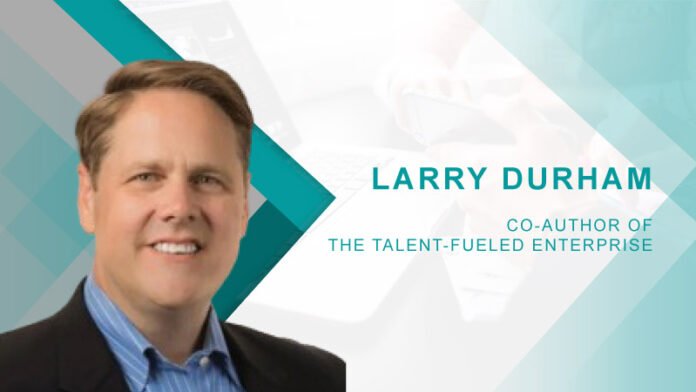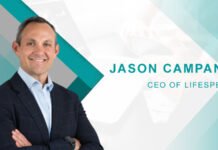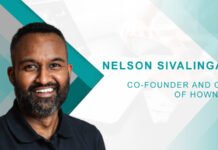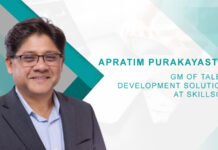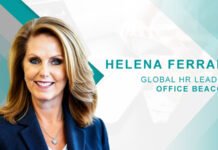Larry, we’re delighted to have you at HRTech Cube. To begin, could you please share your professional journey with us? How did your career path lead you to focus on building resilient and durable workforces?
Thank you for having me! My career journey began in financial planning and services, and about five years in, I stumbled into the world of training. I quickly became captivated by the potential of learning—not only in shaping individual career paths but in driving organizational impact. I remember reading The Fifth Discipline by Peter Senge, where he stated, ‘an organization’s ability to learn may well be its only sustainable competitive advantage.’ That idea resonated deeply with me and has been a guiding principle throughout my career.
Since then, I’ve been dedicated to evolving the learning experience to build more resilient and adaptable workforces. Over the past three decades, I’ve had the privilege of working with numerous Fortune 500 companies, helping them co-create talent development solutions that not only meet immediate needs but also foster agility and long-term growth. This focus on making people and organizations more agile has driven my work, particularly in designing strategies that integrate personal growth with professional skill development.
As I moved into talent management and consulting, I continued exploring how we can better align organizational needs with individual aspirations to create a workforce that’s both engaged and prepared for change. Now, as President of St. Charles Consulting Group, I lead a team committed to these same principles, with the goal of helping organizations thrive in a constantly evolving landscape.
Outdated talent models often view employees purely from a utilitarian perspective. What do you believe are some of the key limitations of these traditional approaches, and how do they impact long-term employee engagement and performance?
Traditional talent models often view employees almost exclusively as resources, which can feel impersonal and short-sighted. When organizations see people in utilitarian terms, it limits true engagement and creates an environment where employees might feel undervalued. I believe this approach ultimately impacts performance and loyalty because people want to be recognized for their full potential, not just their current job skills. To build durable, resilient workforces, we need a more holistic approach that values individuals and invests in their growth for the long haul.
In today’s fast-paced work environment, resilience has become a vital skill. What strategies do you think are essential for organizations to help their employees build resilience, and how can this contribute to both personal growth and business success?
For me, building resilience starts with creating an environment that supports continuous learning and adaptability. At St. Charles Consulting Group, we advocate for a blend of experiential learning, exposure to different roles, and skill-building opportunities. When employees feel supported and encouraged to learn on the job, they develop a personal sense of resilience that contributes to both their growth and the organization’s adaptability. I’ve seen firsthand how this approach strengthens teams and drives long-term success.
I believe new ways of working require us to create some level of discomfort in what is asked of individuals. If you aren’t being stretched, then you are likely getting comfortable, and over time that leads to what I call dexterity atrophy.
Many companies overlook the importance of aligning workforce goals with employees’ personal and professional growth aspirations. What are some effective ways leaders can bridge this gap to foster a more collaborative and engaged workforce?
Bridging this gap is all about aligning workforce goals with what we reference in the book as the ‘human deal,’ which includes supporting employees’ professional and personal development. It’s about recognizing that employees bring unique goals, strengths, and aspirations to the workplace, and leaders can tap into these to drive both individual fulfillment and organizational success.
To make this alignment effective, leaders can start by creating meaningful experiences that go beyond day-to-day tasks. This includes offering employees opportunities to work on projects that build new skills, tackle complex challenges, and expand their perspectives. By designing work to be engaging and growth-oriented, leaders can foster a sense of purpose that resonates with employees’ personal aspirations, making them feel valued and integral to the organization’s mission.
Offering pathways for career growth is another key element. Employees are more likely to invest in their roles if they see a clear path forward—whether through promotions, lateral moves, or opportunities in other departments. Leaders can facilitate this by creating robust development plans, career coaching, and internal mobility programs that give employees visibility into potential career paths and the skills they’ll need to get there. When employees feel they have control over their career trajectory, they’re more engaged and motivated to contribute to broader organizational goals.
Skill-building opportunities are also essential to bridging this gap. Today’s workforce wants to grow, not just in their core competencies, but in new, market-relevant skills. Leaders can support this by creating a learning culture that encourages continuous development through access to training, workshops, mentorship programs, and resources for self-paced learning. For example, employees could be encouraged to set annual learning goals tied to both their current roles and future aspirations. When these opportunities are strategically aligned with the organization’s goals, employees can see how their growth directly contributes to company’s success.
I’ve found that when we focus on employees’ aspirations—listening to their career goals, understanding their passions, and creating opportunities for them to achieve those goals within the organization—it fosters greater loyalty and engagement. This approach not only drives personal growth but also cultivates a motivated workforce that is committed to achieving the organization’s mission. Ultimately, when leaders invest in aligning these dual goals, they create a workplace where employees see their development as interconnected with the organization’s success, driving both loyalty and performance.
What role do you think employee input should play in shaping a company’s talent strategy? Are there specific methods you’ve seen work well for encouraging meaningful contributions from employees on their own development paths?
Employee input is crucial to developing a talent strategy that resonates and adapts with organizational needs and employee aspirations. When employees participate in shaping their own development paths, they feel more connected to the organization, enhancing both engagement and performance.
We believe that the utilization of talent marketplaces to give employees access to internal opportunities aligned with their career goals, helping them find growth pathways within the company. This tool empowers employees to take control of their development while allowing managers to identify and nurture internal talent for evolving needs. Additionally, internal surveys and feedback loops provide us with insights into employee interests and skills, which we use to shape training, performance management, and career progression initiatives. Sharing survey outcomes and showing how feedback influences decisions fosters a sense of transparency and trust.
Focus groups and employee advisory panels are also highly effective. They bring employees from different roles together to offer real-time insights on new initiatives, ensuring our talent strategies are inclusive and relevant. Advisory panels, for instance, have helped us refine leadership development programs to align more closely with what our workforce values. Combined with one-on-one check-ins and goal-setting sessions between managers and employees, this approach creates a supportive feedback structure that aligns personal goals with business priorities.
Involving employees in these ways cultivates a culture of ownership, loyalty, and innovation, creating a talent strategy that is adaptive and aligned with the long-term goals of both the organization and its people.
Could you share any specific examples or practices that you’ve implemented to transform talent within an organization? How did these changes positively impact the workforce?
Recently, we led initiatives like designing an AI strategy for talent management, transforming leadership programs to support diversity, and redesigning the learning model within a large Audit practice. These initiatives were about more than just meeting short-term needs; they were designed to align functional capabilities with core cultural values, driving both performance and deeper employee engagement. I’m really proud of how these efforts have helped create a more agile and resilient workforce with our clients.
In building a durable workforce, data and analytics play a growing role. How can organizations effectively leverage data to gain insights into what truly drives performance and engagement?
Data is essential for understanding what drives employee performance and engagement. By leveraging predictive analytics, engagement surveys, and AI-powered talent marketplaces, organizations can identify patterns that correlate with high performance and satisfaction. Behavioral analytics, such as data from learning management systems and communication platforms, reveal how employees interact with resources, helping leaders optimize team structures and training programs.
Personalized development plans and 360-degree feedback, enriched by data, enable targeted growth strategies, while sentiment analysis of employee communications can detect shifts in morale for proactive intervention. Through a comprehensive talent dashboard, leaders can monitor engagement, skill development, and retention risks in real time, making informed adjustments to foster a culture of continuous improvement. Data insights ultimately build trust, drive performance, and create alignment between employee aspirations and organizational goals.
From a personal strategy perspective, how do you approach leadership and workforce development? Are there guiding principles or methods that you find especially effective?
In my approach to leadership, I focus on adaptability and the ‘human element.’ Workforce development isn’t just about skills; it’s about creating an environment where people feel valued, engaged, and supported. I believe in building a long-term, agile talent ecosystem that balances professional development with personal growth. This focus on the whole person creates a durable, motivated workforce ready to take on future challenges. In this newly skills-focused environment, we have to be careful not to over-index on skills, and thus de-emphasize the human element.
For leaders looking to foster a resilient and lasting workforce, what advice would you give them as they shape their talent and engagement strategies for the future?
My advice to leaders is to embrace flexibility and prioritize long-term growth over quick fixes. Building resilience in a workforce means fostering team cohesion, encouraging diverse perspectives, and blending technical skill-building with personal development. When we give employees the space to grow and adapt, we build a more engaged, resilient workforce that’s ready to tackle whatever comes next.
Finally, as we wrap up, do you have any final thoughts on what the future of workforce development and employee engagement might look like? How can leaders prepare to meet these evolving needs?
Looking forward, I see workforce development becoming even more personalized and tech-integrated. With advancements in AI and platforms like talent marketplaces, we can offer employees tailored growth opportunities that fit their aspirations and evolving skills. I believe the future is about creating a ‘human deal’ that prioritizes inclusivity, purpose, and belonging. This approach helps both organizations and employees thrive together.

Larry Durham Co-Author of The Talent-Fueled Enterprise
Larry Durham is a visionary in enterprise learning and talent development. Over the last 30 years, he has worked with large professional services firms and many Fortune 500 companies to co-create innovative talent development solutions that yield measurable business outcomes. Larry’s work has provided him the opportunity to present/speak, consult and facilitate training in over 30 countries. Larry has been president of St. Charles Consulting Group for the last ten years. Before joining St. Charles in 2014, Larry spent ten years with PwC’s Human Capital Advisory Services, where he served as the Learning Practice Leader. Over the last two years, Larry has led numerous strategic engagements, such as 1) developing an AI strategy for the Talent and Learning function within a global organization, 2) transforming the leadership development program for under-represented groups to better align with diversity goals, 3) redesigning the firmwide Learning Operating Model, 4) leading a multi-faceted initiative to fundamentally improve the functional capabilities and cultural alignment of learning within an Audit practice. Beyond client work and managing the Firm, Larry actively shares his insights and experiences in learning, and his thought leadership is broadly recognized. His primary focus is on ways organizations define, support, and leverage the value of education within the enterprise (and beyond). Larry has written numerous articles on these and other topics in the talent development arena, and he serves as host of The HIVE podcast, which addresses insights and innovations in talent development. In his most recent writing endeavor, Larry is a contributing author of the widely acclaimed The Talent-Fueled Enterprise - A Powerful Approach to Build Tomorrow’s Workforce, published in June 2024.
